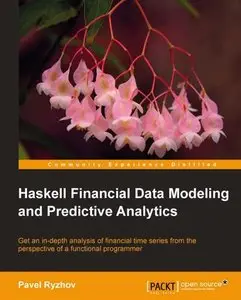Haskell Financial Data Modeling and Predictive Analytics by Pavel Ryzhov
2013 | ISBN: 1782169431 | English | 112 pages | PDF | 3 MB
2013 | ISBN: 1782169431 | English | 112 pages | PDF | 3 MB
Get an in-depth analysis of financial time series from the perspective of a functional programmer
Overview
Understand the foundations of financial stochastic processes
Build robust models quickly and efficiently
Tackle the complexity of parallel programming
In Detail
Haskell is one of the three most influential functional programming languages available today along with Lisp and Standard ML. When used for financial analysis, you can achieve a much-improved level of prediction and clear problem descriptions.
Haskell Financial Data Modeling and Predictive Analytics is a hands-on guide that employs a mix of theory and practice. Starting with the basics of Haskell, this book walks you through the mathematics involved and how this is implemented in Haskell.
The book starts with an introduction to the Haskell platform and the Glasgow Haskell Compiler (GHC). You will then learn about the basics of high frequency financial data mathematics as well as how to implement these mathematical algorithms in Haskell.
You will also learn about the most popular Haskell libraries and frameworks like Attoparsec, QuickCheck, and HMatrix. You will also become familiar with database access using Yesod’s Persistence library, allowing you to keep your data organized. The book then moves on to discuss the mathematics of counting processes and autoregressive conditional duration models, which are quite common modeling tools for high frequency tick data. At the end of the book, you will also learn about the volatility prediction technique.
With Haskell Financial Data Modeling and Predictive Analytics, you will learn everything you need to know about financial data modeling and predictive analytics using functional programming in Haskell.
What you will learn from this book
Learn how to build a FIX protocol parser
Calibrate counting processes on real data
Estimate model parameters using the Maximum Likelihood Estimation method
Use Akaike criterion to choose the best-fit model
Learn how to perform property-based testing on a generated set of input data
Calibrate ACD models with the Kalman filter
Understand parallel programming in Haskell
Learn more about volatility prediction
Approach
This book is a hands-on guide that teaches readers how to use Haskell's tools and libraries to analyze data from real-world sources in an easy-to-understand manner.
Who this book is written for
This book is great for developers who are new to financial data modeling using Haskell. A basic knowledge of functional programming is not required but will be useful. An interest in high frequency finance is essential.



